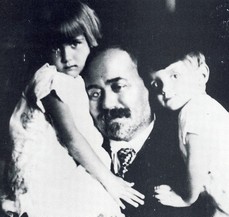Mahatma Gandhi and Kristian Krekovic
connecting India and Croatia
Darko Zubrinic, Zagreb, Croatia, 2020
Keywords. Mahatma Gandhi, Kristian Kreković, Sina Kreković, India, Croatia, Spain, Catalonia, Pantempion, Bombay (i.e., Mumbay), Palma de Mallorca, Museu Krekovic, World Government.
A shorter version of this article was published here:
Darko Žubrinić: Mahatma Gandhi and Kristian Kreković connecting India and Croatia, in "Croatian-Indian Links: Thirty Chapters for Thirty Years of Diplomatic Relations (1992-2022)" (ed. Ivan Andrijanić), pp. 129-137.
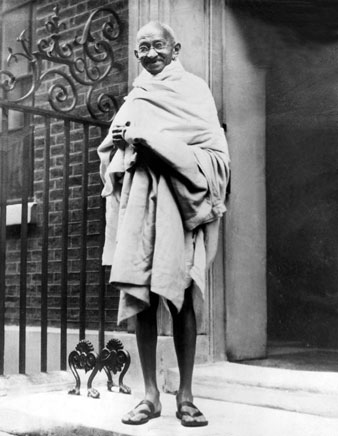
Mahatma Gandhi (1869-1948) in 1931 in Paris
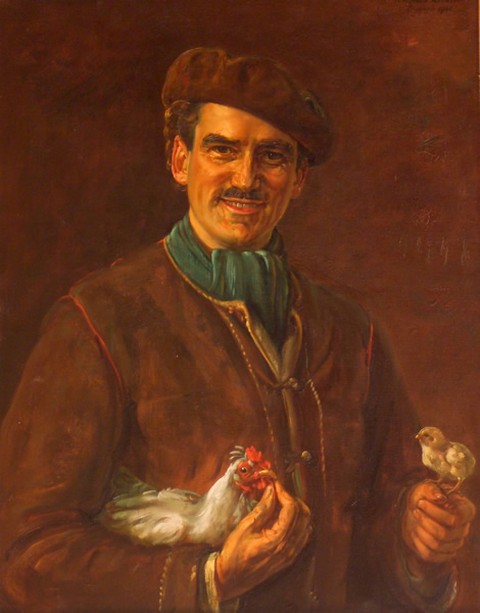
Kristian Kreković (1901-1985), selfportrait, source www.kristiankrekovic.com
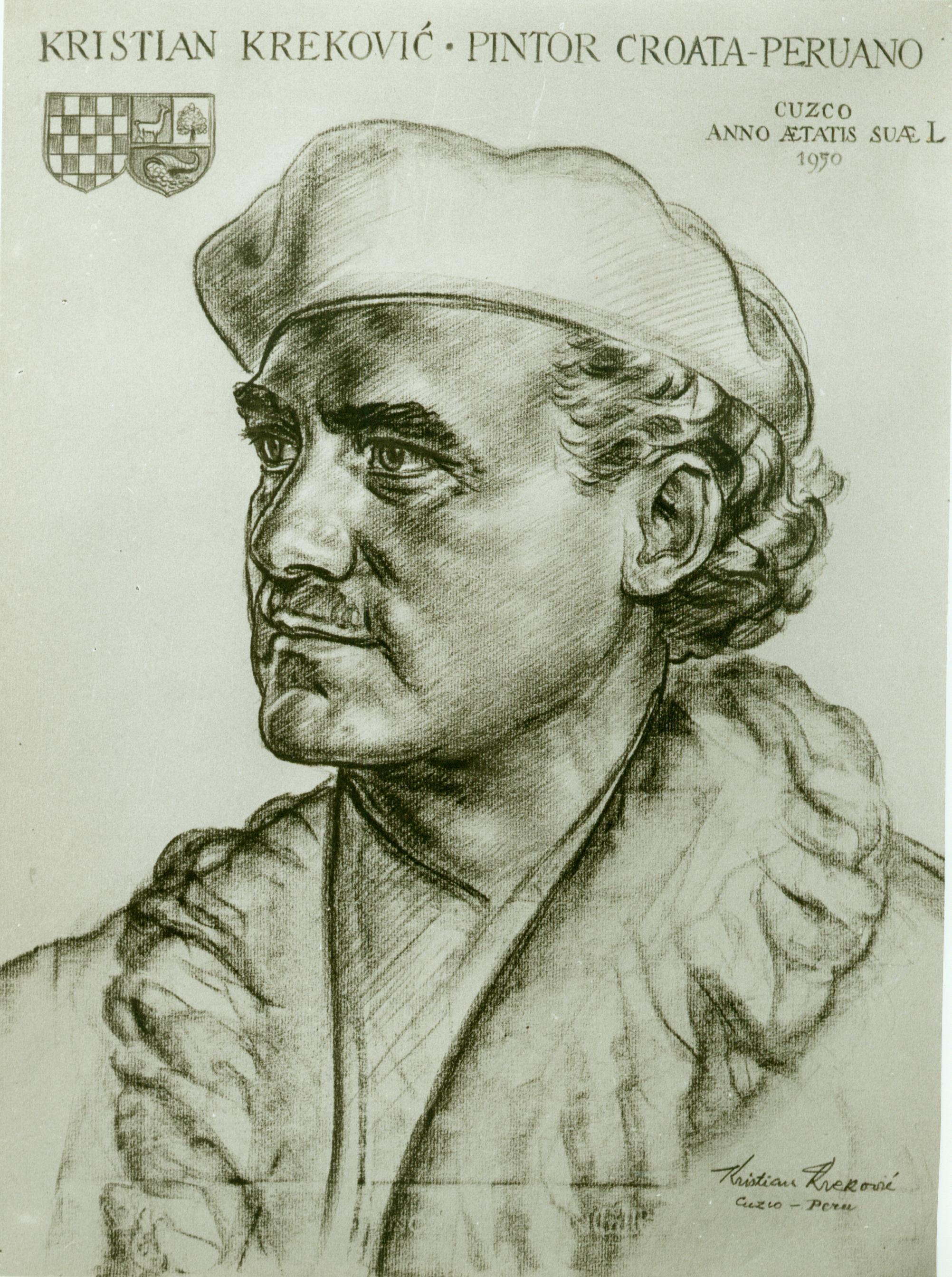
Kreković's selfportrait in Cuzco, Peru, 1950.
Source www.kristiankrekovic.com
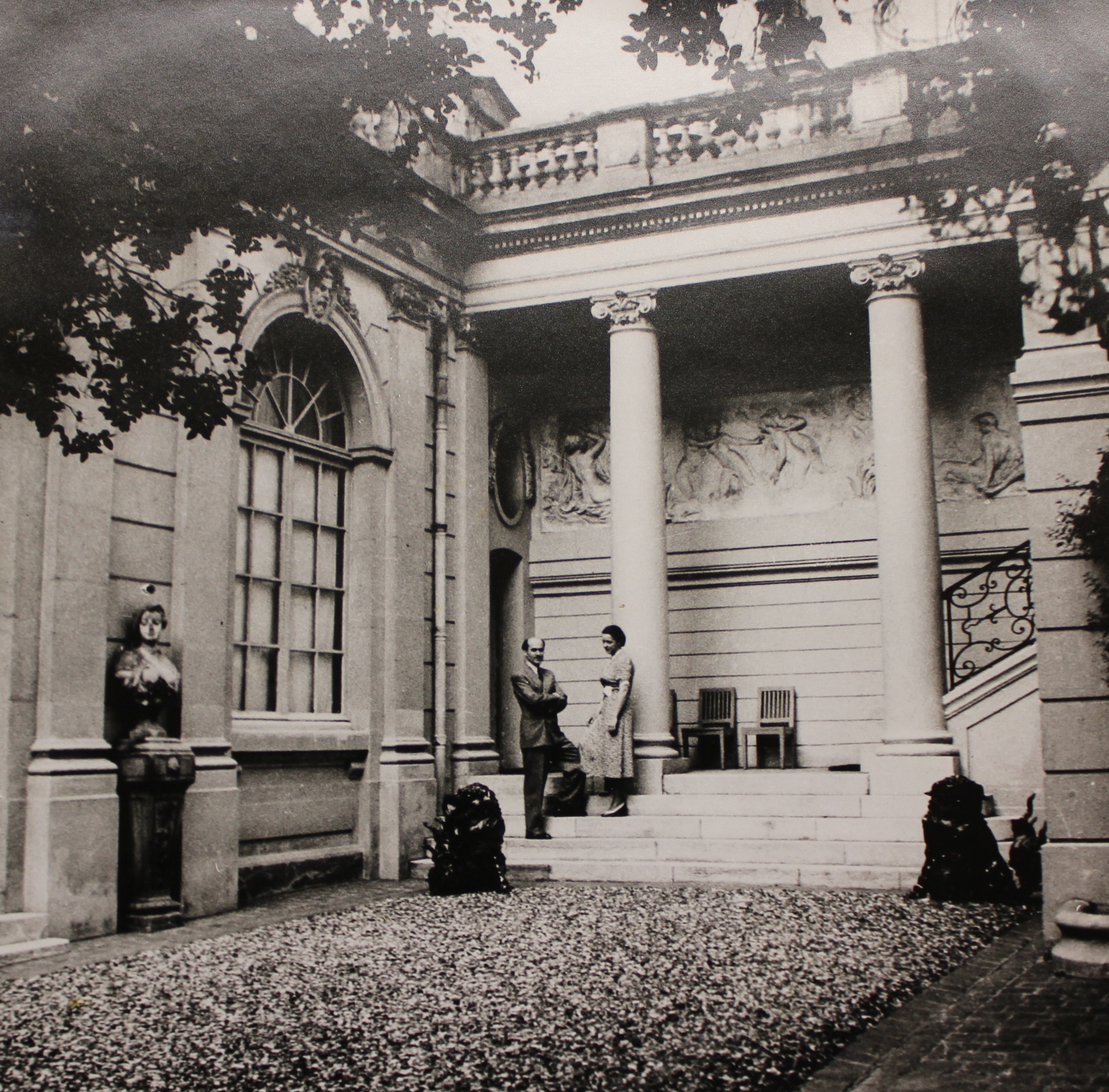
Sina and Kristian Kreković in
front of their atelier in Paris in
1934, where Mahatma Gandhi was portrayed.
Address (many thanks to Mr. Zvonimir Frka Petešić for this information):
Atelier Kristian Krekovic
Rue Leon Jost 14,
13. arrondissement, Paris
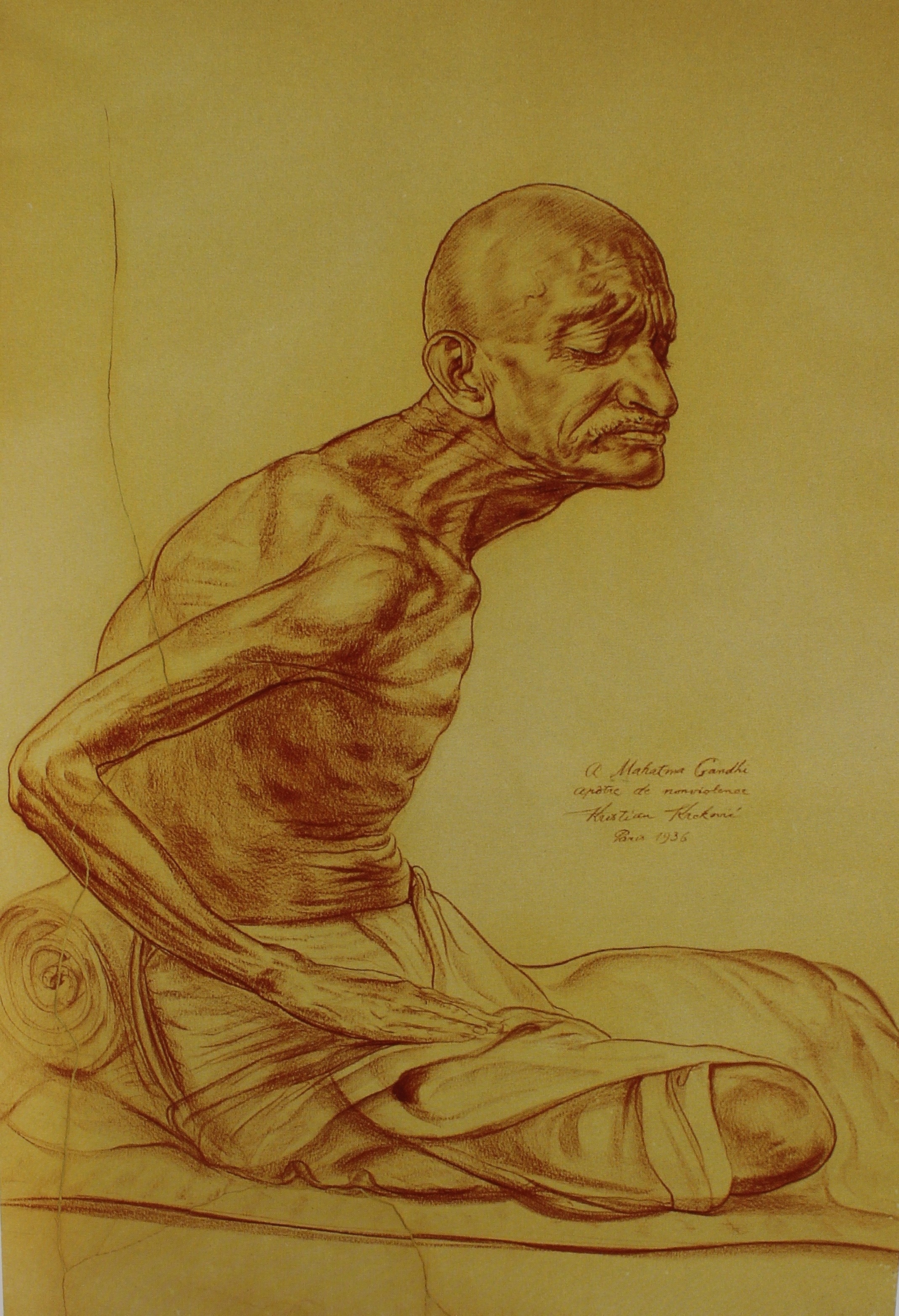
Mahatma Gandhi portrayed by
Kristian Kreković in 1936 in his atelier
in Paris (1.25 x 1.85 m). The portrait is kept in Museu Kreković in
Palma de Mallorca,
Spain. Source (Romaguera i Rubí).
Dedication
in the middle of the above portrait:
A
Mahatma Gandhi
apôtre de nonviolence
Kristian Kreković
Paris 1936
An essay by Vanja Gabrić, Metković: Osvrt na portret Mahatma Gandhija
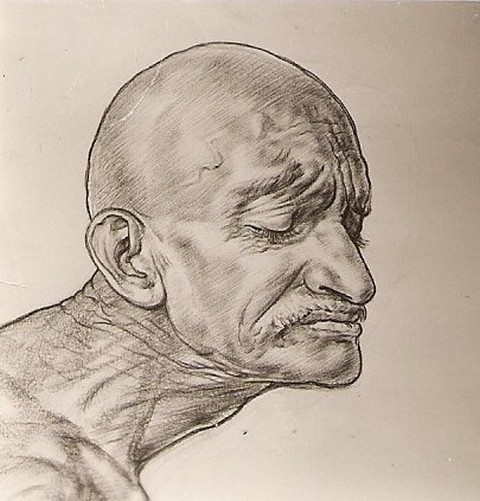
Mahatma Gandhi, 1936, source www.kristiankrekovic.com
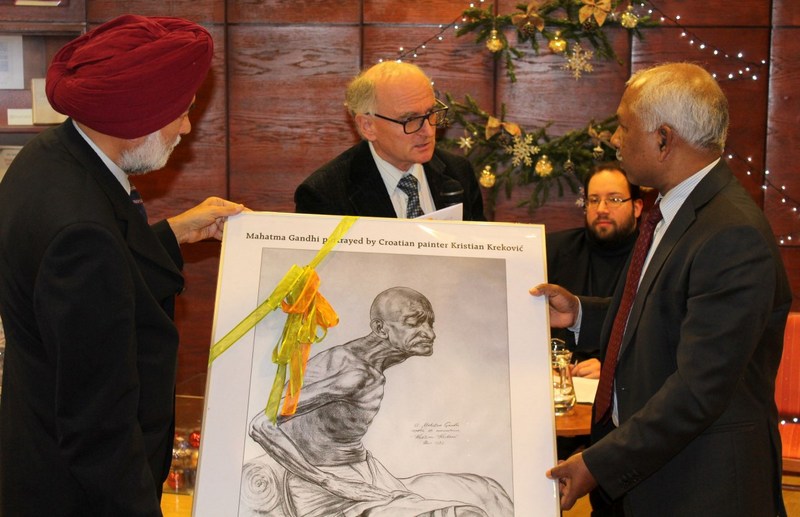
Presenting the portrait of Mahatma Gandhi on December 2019 to Mr.
Jitendra Nath Majhi (on the right)
advisor and envoy of H.E. Mr. Arindam Bagchi, the then Ambassador of
the Republic of India to Croatia.
On the left Mr. Joginder Singh Nijjar, president of the Croatian -
Indian Society in Zagreb, and in the middle
Darko Žubrinić, president of the Society of the Friends of the Glagolitic Script,
Zagreb.
Sitting behind them is Mr. Robert Bulat, secretary of the Croatian -
Indian Society.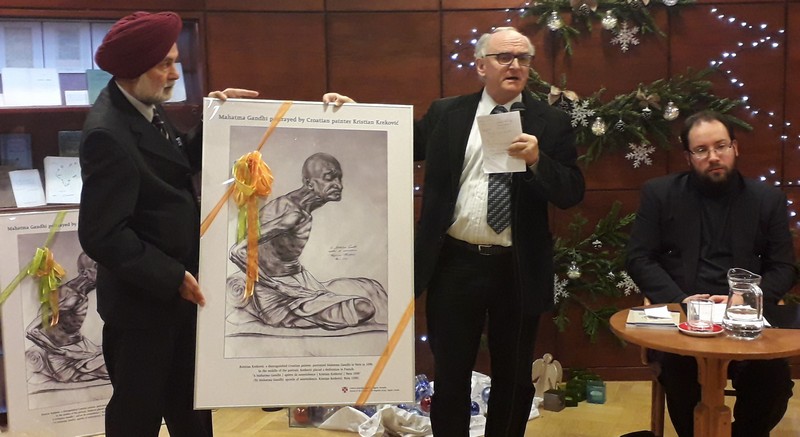
The event took place in the building of the cultural society Napredak
(Advancement, Progress) in Zagreb.
In her MSc Thesis completed in 1974 and written in French, dealing with Croatian painter Kristian Kreković (1901–1985), Ingeborg Möller Rizo has dedicated two of its pages to the connection of the painter with Mahatma Gandhi (1869–1948). See (Möller Rizo, pp 27 and 28). The description appears as a part of Section 2 of the Thesis, on pp. 26–29, entitled Le Pantempion.
The Pantempion was conceived as a sanctuary dedicated to the
tolerance
of all religions of the world. Kreković made several architectural
sketches and plans for this huge architectural complex. The meaning of
the notion of Pantempion is
roughly All-Temple (from Greek: pan + tempion) or The Temple of the
Temples. It had to represent all the major religions of the
world:
- Hinduism, Sikhism
- Buddhism,
- Judaism,
- Christianity,
- Islam, etc.
Kreković’s wish was that all the people of the world get used
in
tolerating other religions.
The Pantempion was planned to
consist of one huge temple, encircled with twelve smaller temples
representing the largest religions of the world. He planned to include
sixty chapels representing smaller religious groups as well. In the
central hall, he envisaged to place the altar for meditation. The Pantempion had to be decorated with
various religious symbols:
- The Star of David,
- The Cross,
- The Crescent of Muhammad, etc.
In the central meditation altar, he predicted to exhibit the Globe
suspended on shoulders of twelve great interpreters of the Holy Word:
- Confucius,
- Buddha,
- Moses,
- Zarathustra,
- Jesus Christ,
- Muhammad,
- Sri Guru Nanak, etc.,
one by another.
The site of Pantempion was
planned to be built in the city of Bombay (now Mumbay) in India, since
many different religions can be seen there. In order to be better
acquainted with the spirituality of the East, Kreković had collaborated
with Gandhi, who showed a deep understanding for his projects.
In the monograph (Romaguera i Rubí, p. 113)
one can find a very nice
reproduction of Gandhi’s portrait, completed in 1936 during the visit
of Gandhi to the atelier of his friend Kreković. The inventory number
of Gandhi’s portrait exhibited in Krekovic’s Museum in Palma de
Mallorca is 134, and its dimensions are 1.85 cm of height and 1.25 of
width. The portrait is described on p. 213 of the monograph, where it
is explained that Gandhi was portrayed by the painter during his
meditation in Kreković’s atelier, dressed in his khadi. At the bottom
of the portrait appears the following title: “GANDHI” (which is not
exhibited on the photo), as well as the dedication written in French,
placed in the middle: “A Mahatma
Gandhi / apôtre de nonviolence [1]
/ Kristian Kreković / Paris 1936”.
Gandhi was portrayed while sitting on a low Chinese table in Kreković’s
atelier; see (Nikolić, p. 26).
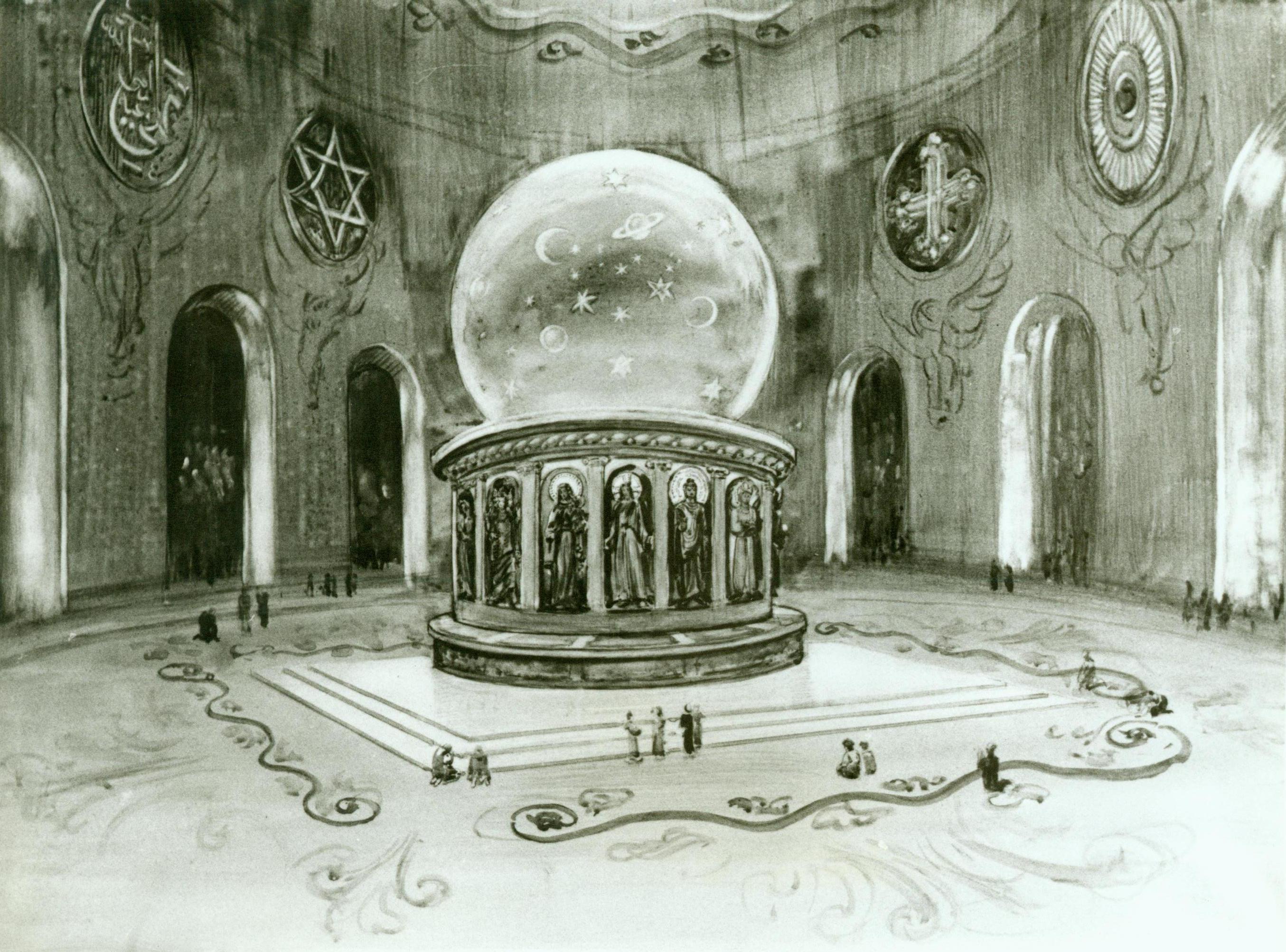
Kreković’s 1926 project of
Pantempion (The Temple
of the Temples),
planned to be placed in Mumbay, India
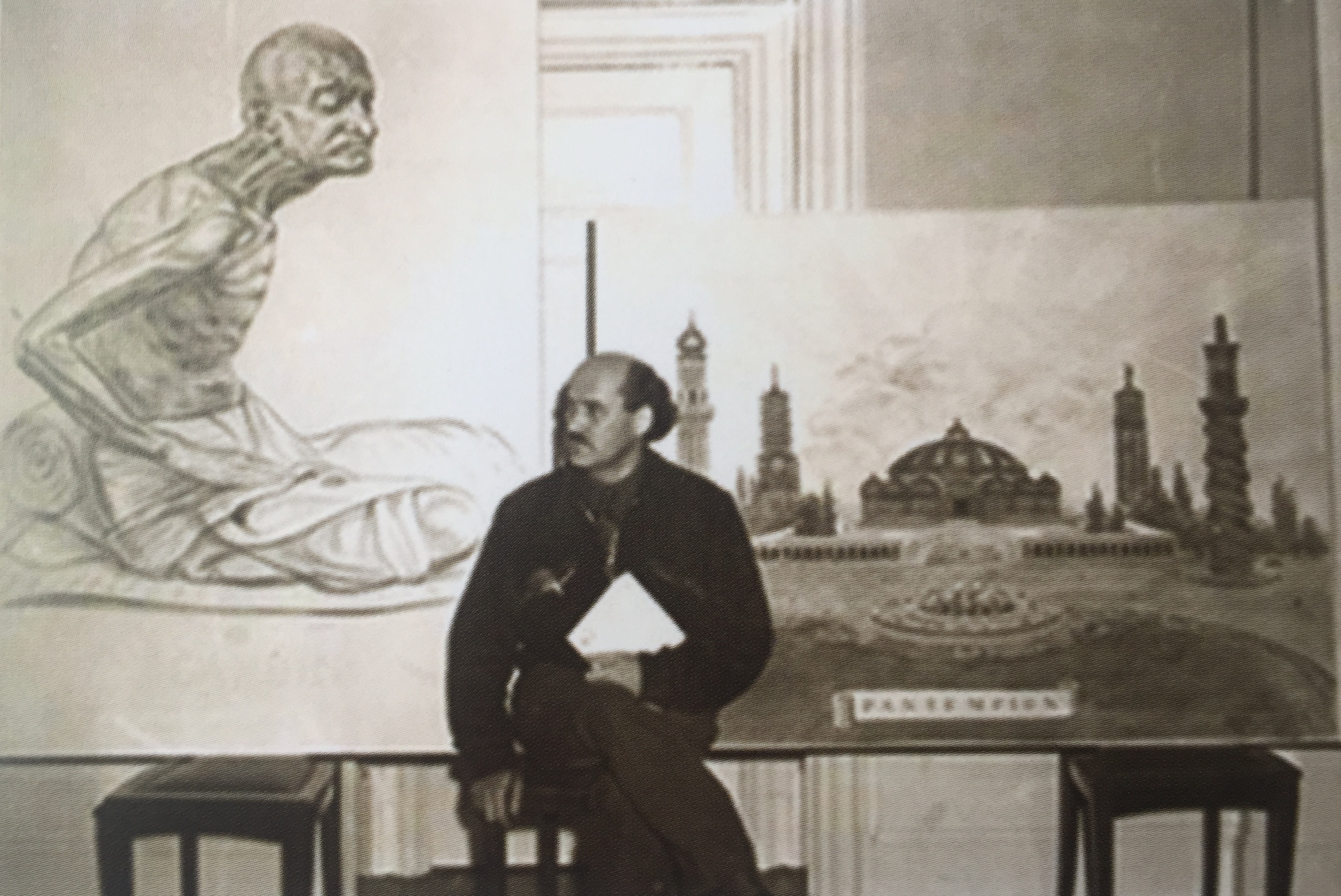
Mahatma Gandhi, Kristian
Kreković and Pantempion
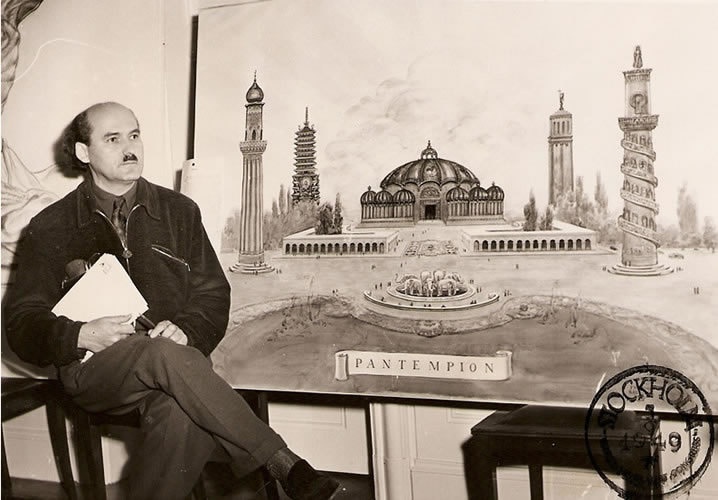
Kristian Kreković and his Pantempion.
The seal on the bottom right
reads: Stockholm 1949.
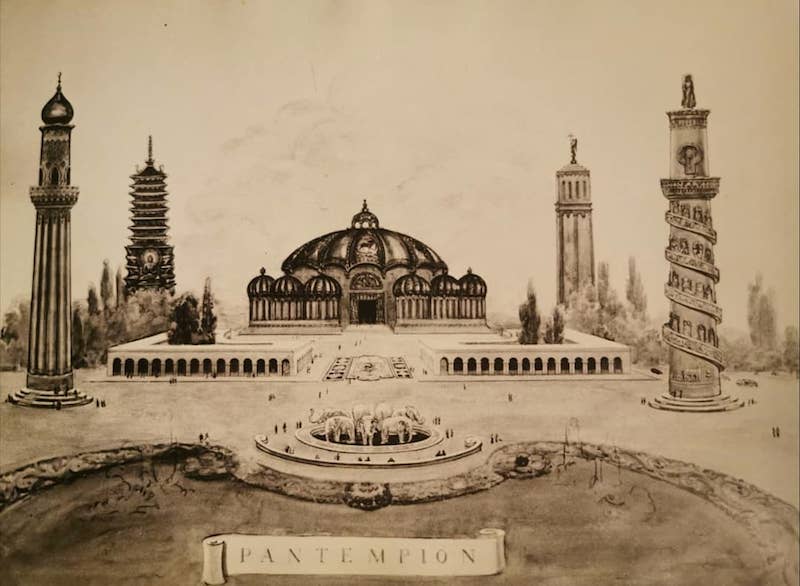
Source gramho.com
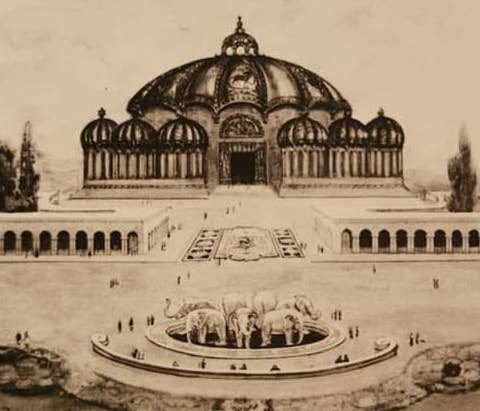
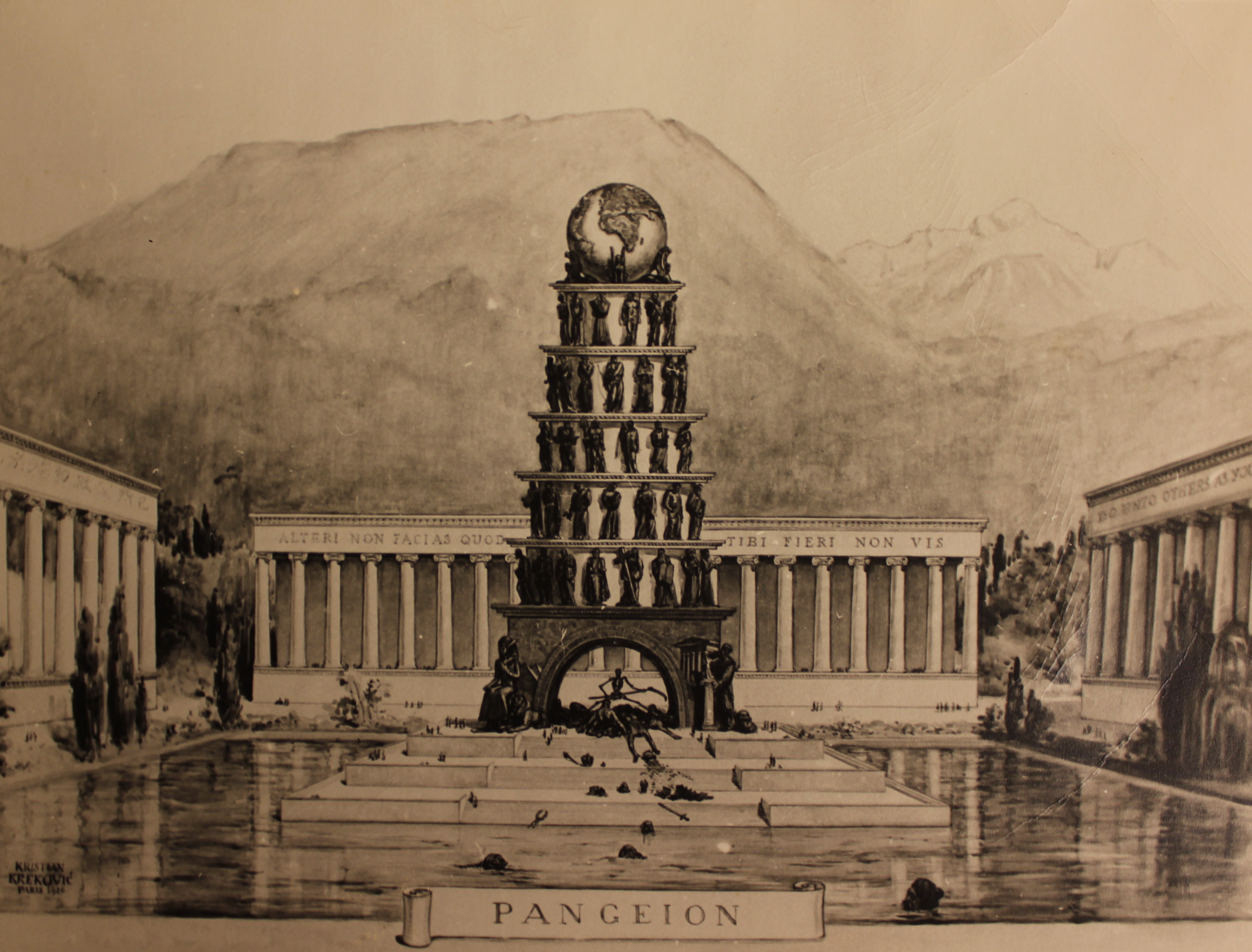
Kreković’s project of Pangeion
from 1926,
to be placed in Europe in Geneva in
Switzerland
Inscriptions in Latin and English
(on the right):
Alteri
non facias quod tibi fieri non vis
Do
unto others as you would have them do unto you
Also planned in Chinese and Russian.
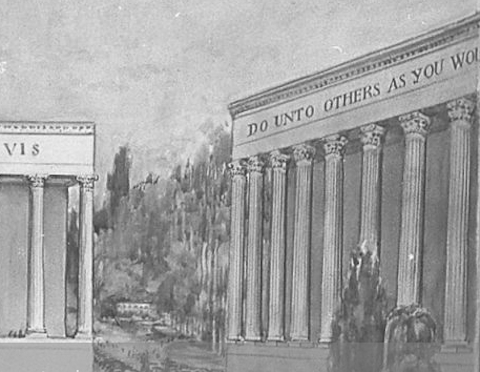
In English (above) and Russian (below)
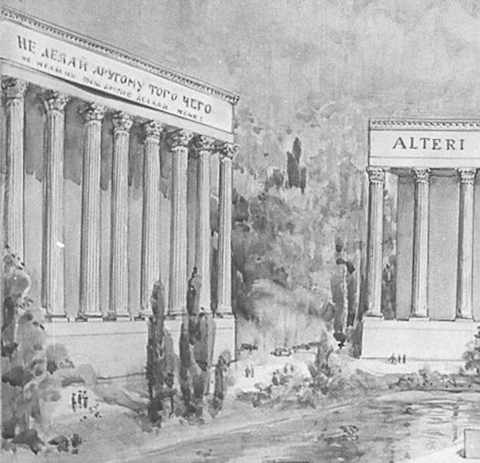
On the left, in Russian:
Не делай другому того чего
не желаешь чтоб другие делали тебе!
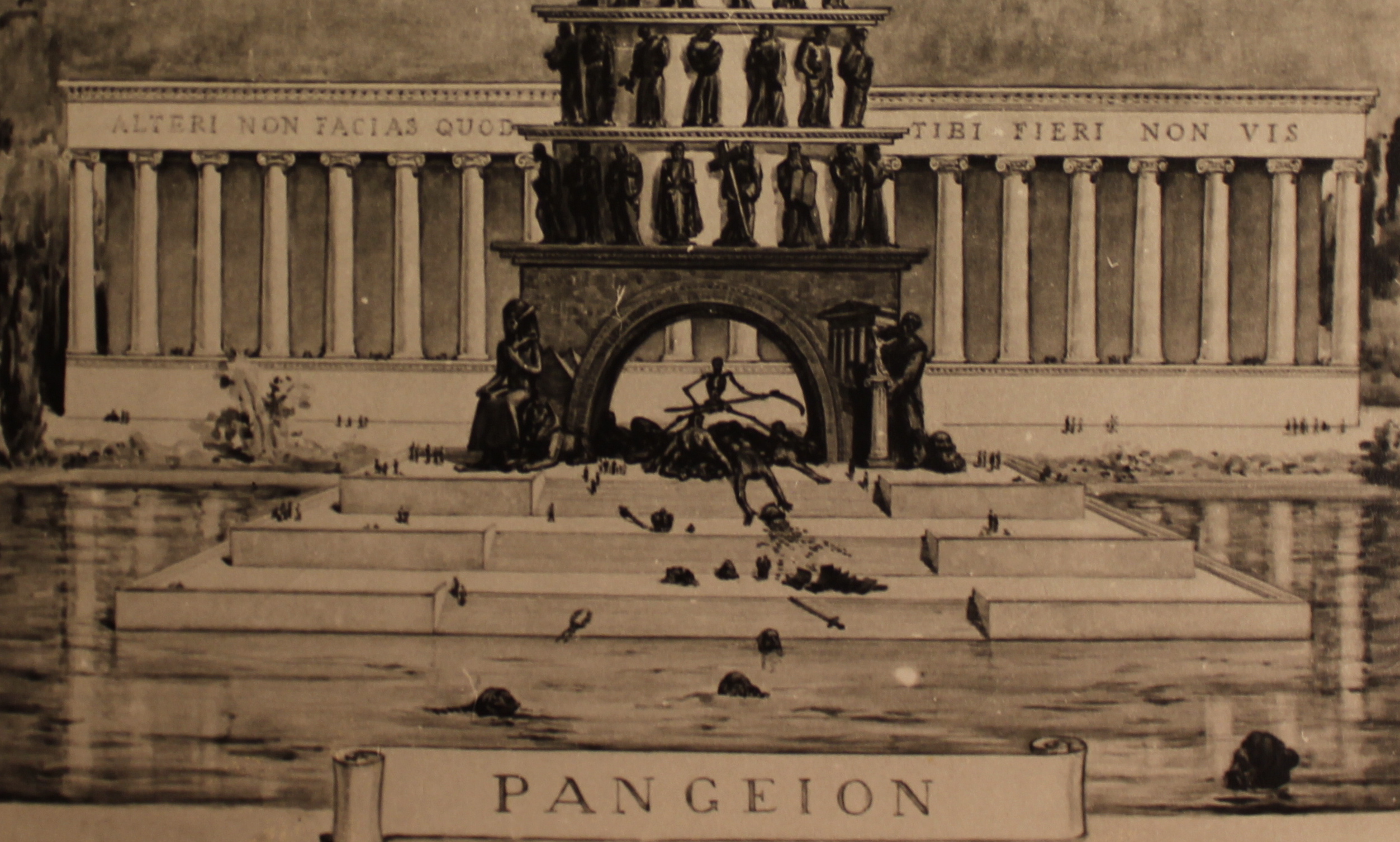
A detail of Pangeion, to be
placed in Europe in Geneva in Switzerland
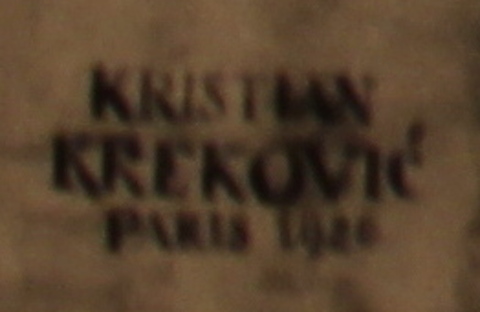
Drawn in Paris in 1926
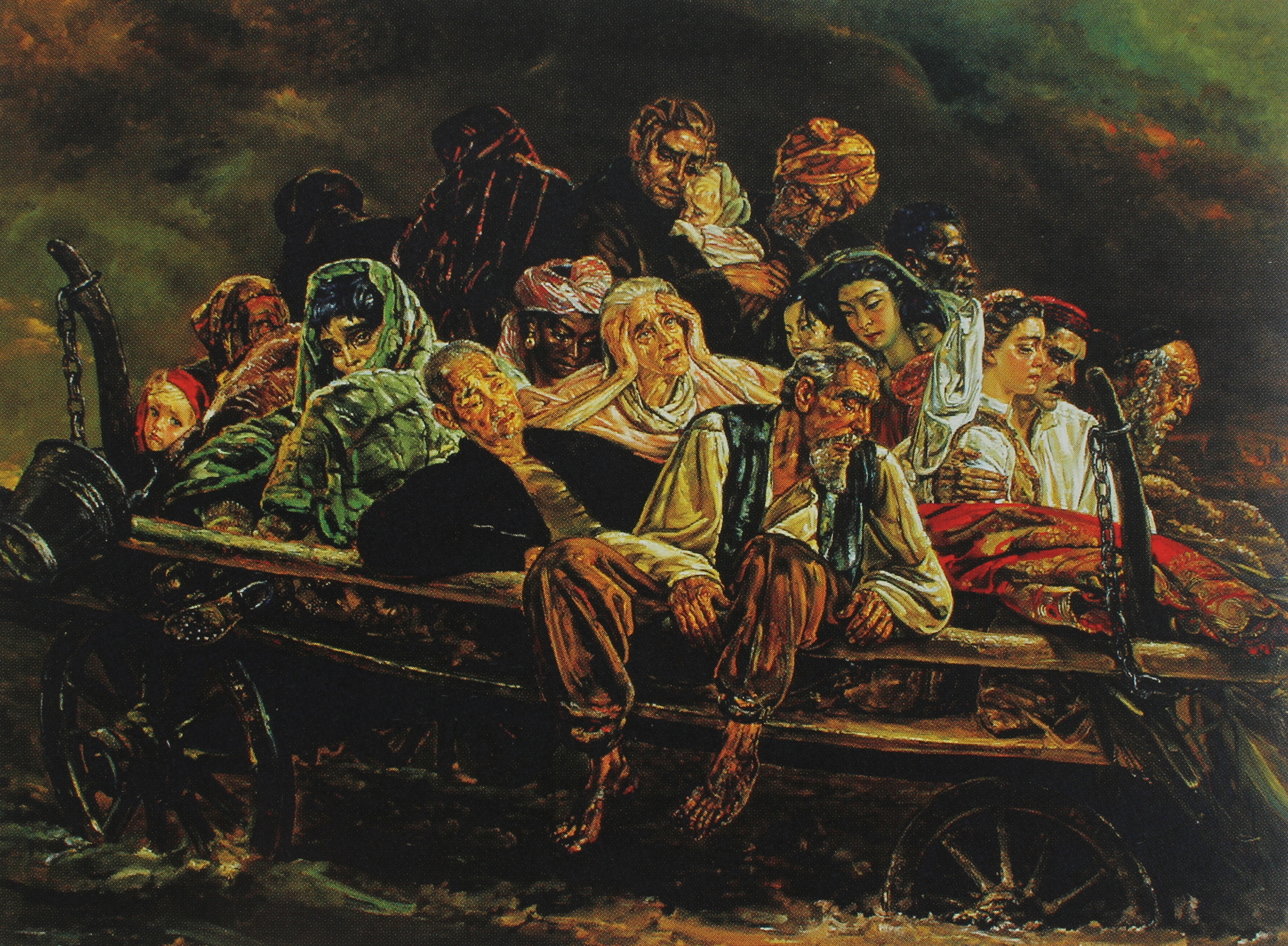
Probably the best-known work of
art of Kreković: The Exodus of the
20th Century (representing the tragedy of all the races). After
1945,
he had the status of displaced person, being left without the
possibility of visiting his parents and his homeland again.
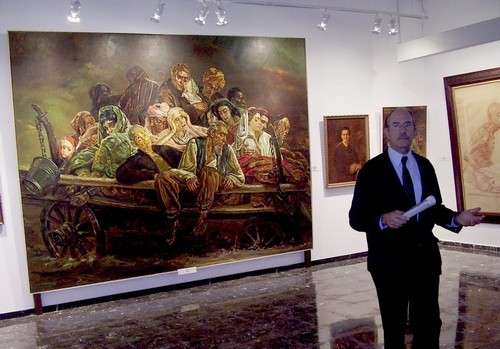
Mahatma Gandhi on the
far
right of the photo, drawn in red chalk
(Museu Kreković in Palma de Mallorca). Source http://amigoskrekovic.blogspot.com/
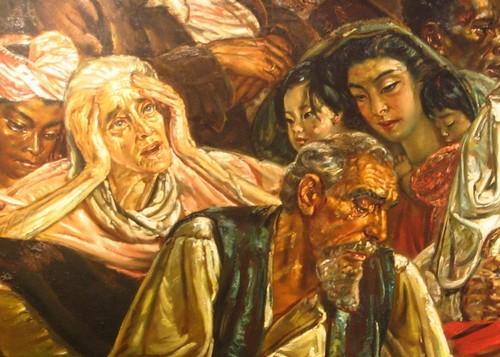
a detail
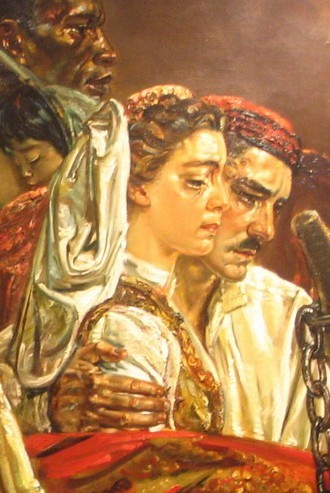
Sina and Kristian Kreković in Croatian national costume:
Kristian with a Lika cap, Sina in the costume of the Šibenik area.
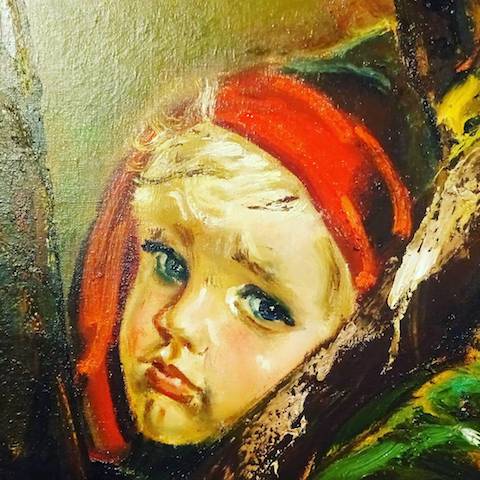
On the far left of Kreković's Exodus of the 20th century. Source gramho.com
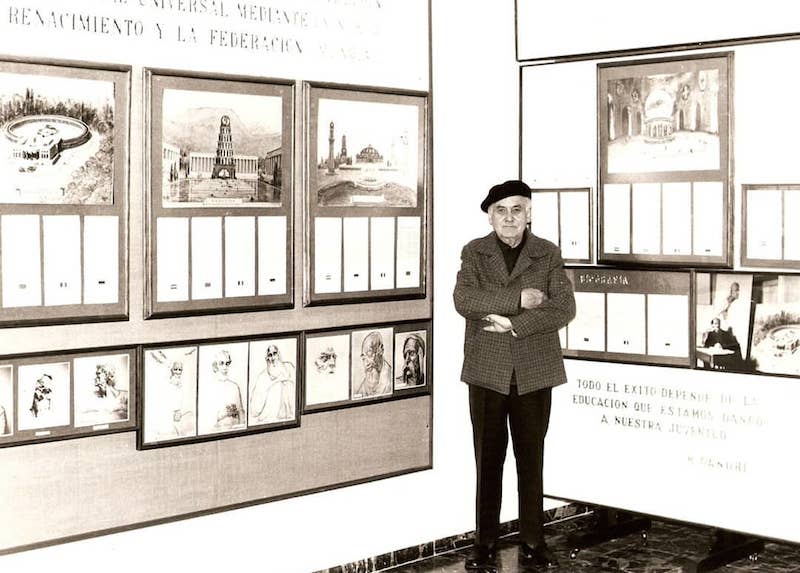
Projects of Universal peace, New Renaissance and World Federation
on the left.
On the right (at the bottom), opinion of Mahatma Gandhi:
Todo el éxito depende de la
educación que estamos dando a nuestra juventud
(All the success depends on the education that we provide for our youth)
Source www.kristiankrekovic.com
It is not known when and how Mahatma Gandhi and Kristian Kreković got
acquainted. However, it is certain that they met each other in 1931 at
the latest, since Kreković mentions on several occasions his portrait
of Gandhi being completed in 1931 and planned for the Pantempion sanctuary in Mumbai,
India. It seems that this portrait, which had to be exhibited in Pantempion in Mumbay, was lost in
1941 during the WWII.
According to (Gaspar Sabater, pp. 38 and 54),
Mahatma Gandhi highly praised Kreković’s art and wrote the following:
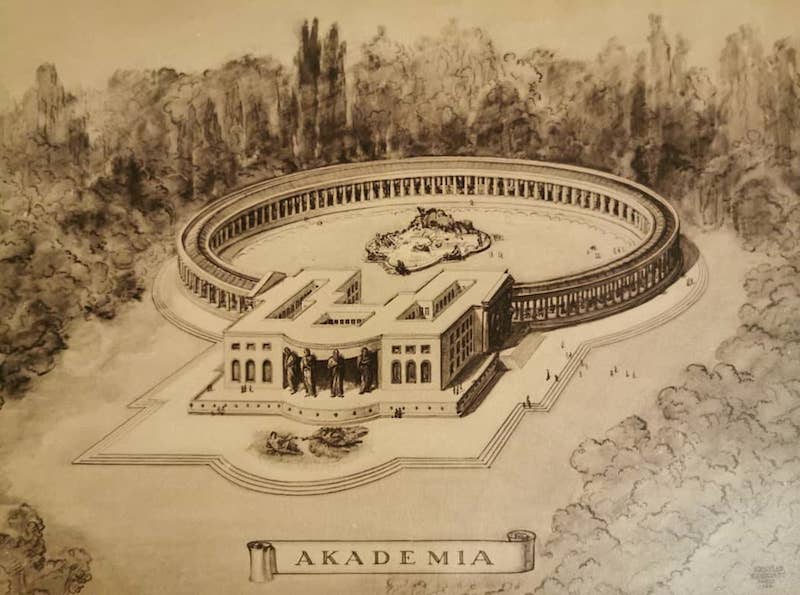
Akademia Titana by Kristian Kreković. Source gramho.com
We believe that the mushroom-like shape of the Akademia was inspired by Croatian Glagolitic letter S (Slovo).
Here, Slovo means Word (Divine Word). Kristian Kreković was very fond of the Glagolitic Script.
Here is an excerpt from an interview given by Kristian Kreković to
Hrvatska Revija (Croatian Review) [3]
in 1971:
Kreković’s idea of the World Federation included the following three
major projects:
- the Pangeion,
where
the World Government would be placed, aimed at fostering tolerance and
mutual understanding among the nations (to be placed in Europe, in
Geneva in Switzerland);
- the Pantempion
(The
Temple of the Temples, mentioned above), dedicated to the tolerance
among religions, to be placed in Asia, in India in Bombay (Mumbay);
- the Academia Titana (the Academy), a new type of the academy, where young people would be educated in the spirit of mutual understanding and tolerance, for the needs of the new era of the World Federation, to be placed in North America, in Washington in the USA. See (Möller Rizo, p. 29) and (Nikolić, p. 21).
Here we should stress that Kristian Kreković has lost his three
brothers in the chaos of WW2, and that he spent his youth in
multiethnic and multireligious environment of Bosnia and Herzegovina.
In (Mirth, p. 5) it is described that Kreković
remembered that Gandhi called him a „dreaming
visionary“ (visionnaire
rêveur, in French), while on the other hand, Gandhi called himself a
„practical idealist“ (idéaliste
pratique).
As we have already
mentioned, Kreković made two portraits of Mahatma Gandhi: one for his Pantempion
in Mumbay, India (completed in 1931, but lost in 1941), and another one
in red chalk, representing Gandhi during his mediation in the position
of lotus. This last portrait is exhibited in Kreković’s Gallery in
Palma de Mallorca. The gallery bearing his name (i.e., Museu Kreković)
was officially opened in 1981 by the Spanish Queen Sofia, who accepted
the honor of the godmother of this institution. See the inventory of the Gallery,
provided by the National Library of Spain in Madrid.
Gandhi collaborated with Kreković for the idea of the World Federation.
Gandhi even offered his help in inaugurating the exhbition of
Kreković’s projects on the World Federation, when the painter finishes
them. However, almost all the Kreković’s works of art (more than one
thousand) have been destroyed in 1941 in the circumstances of the WWII,
while Gandhi has been assassinated in 1948.
According to the testimony of Catalonian writer and pacifist Llorenç
Vidal from Palma de Mallorca, the slogan for the projects of
Pantempion, Pangeion and Academia that Kristian Kreković accepted from
Mahatma Gandhi was the following: “The
whole success depends on
education that we provide for our youth.” See (Vidal).
Kristian Kreković accepted the following principle taught by Confucius
and Christ for a happy and harmonious life without fear and tyranny: Do
unto others as you would have them do unto you (in Latin: Alteri
non facias quod tibi fieri non vis; Matthew 7:12). This was
planned to
be the major inscription on the Pantempion, i.e., on The Temple of the
Temples.
Kristian Kreković, a naturalized citizen of Palma de Mallorca, with his
calm, lonely and reticent character, like other peacemakers of his time
-
- Leo Tolstoy,
- Rabindranath Tagore,
- Romain Roland, etc.,
incited basic
inner needs of human beings: that of respecting human rights, of love,
fraternity, tolerance and nonviolence. See (Vidal).
Portrait of Gandhi, as well as the whole collection in Museu Krekovic
in Palma de Mallorca, is protected by the Spanish law, which can be
seen in the source provided by the National Library of Spain, Madrid.
See (Biblioteca Nacional España).
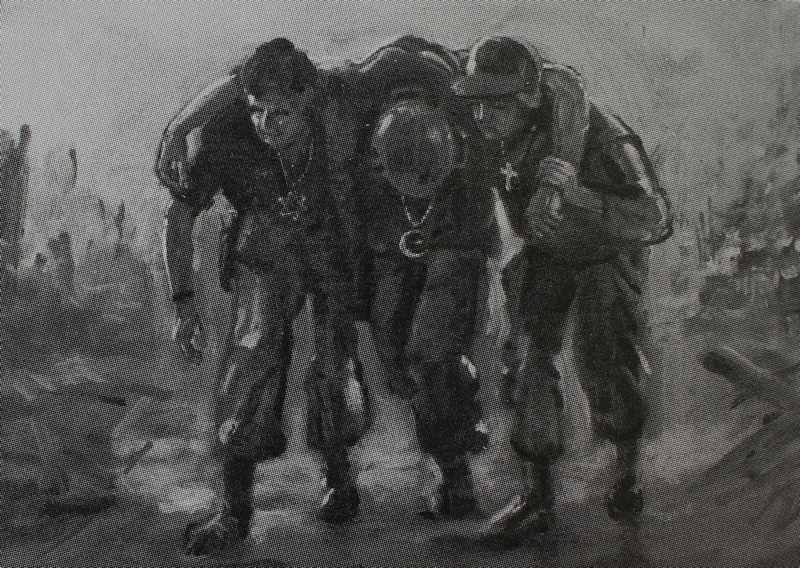
Kristian Kreković: Three Soldiers
(notice their necklaces), source www.kristiankrekovic.com
Except of Kristian Kreković, we can mention at the end a few additional
persons that are deeply connecting India and Croatia:
- Filip Vezdin (or Wesdin, or Paulinus a Sancto Bartolomaeo, born as Burgenland Croat in Austria, 1748 – 1806), the author of the first printed European grammar of Sanskrit and a pioneer of European indology;
- Nikola Tesla (1856–1943), born and educated in Croatia (where he lived until the age of 18), was since 1895 in contact with Swami Vivekananda (1863–1902) in the USA, and under the influence of his spirituality;
- St. Mother Teresa (1910–1997, of Albanian origin) obtained honorary Croatian citizenship by receiving the Croatian passport in Kolkata in 1995 from the then Ambassador of the Republic of Croatia to India, dr. Drago Štambuk; the Croatian Jesuits had a great role in her spiritual development; she was fluent in Croatian, and even delivered sermons on several occasions in Croatian language in the Zagreb Cathedral; in 1979, immediately before receiving her Nobel Prize for Peace in Oslo, Mother Teresa was
- in Croatia's capital Zagreb, where her sandals are now kept that she wore for 18 years, mostly in India; they are exhibited in the Nova Ves street in Zagreb, in the church of St. Dismas;
- Ante Gabrić, of the Society of Jesus (1915–1988), Croatian missionary in Bengal, is called „the Saint of Sundarban in India“;
- Vladimir Paleček (1950–1990), founder of the „Hungry Child“ international fund in 1969 in Croatia’s capital Zagreb, which was sending humanitarian aid (food, medical help, automobiles) to India as well;
- Radoslav Katičić (1930–2019) of the University of Vienna and Mislav Ježić of the University of Zagreb, distinguished Croatian indologists.
The photos appearing in this article, unless otherwise indicated, are
from the personal archive of the author.
Literature
1. Biblioteca
Nacional España:
2. Karlo Mirth,
Painter Kristian Kreković – Indefatiguable Septuagenarian, Croatian
Press, Volume 24, No. 3 (267), 1971, p. 5
3. Ingeborg
Möller Rizo, Kristian Kreković, Mémoire de Maitrîse, Cours
Universitaire Cluny, Septembre 1974 (approx. 100 pp, in French)[5]
4. Vinko
Nikolić: Jedna beskrajna tuga nad sudbinom Hrvatske (An infinite sorrow
over the destiny of Croatia), Hrvatska Revija (Croatian Review),
Barcelona, No. 12, 1971, pp. 15–27
5. Climent
Romaguera i Rubí, Kristian Krekovic, La Collecció del Museu Krekovic,
Consell de Mallorca, Departament de Cultura, 2006 (contains 148 photos,
284 pp, in Catalan)
6. Gaspar
Sabater, Kristian Krekovic, el
artista y su obra, Consell de Mallorca,
Departement de Cultura, Museu Krekovic, 2009 (79 pp, in Castilian)
7. Llorenç
Vidal, Kristian Krekovic, su
museo y su mensaje de paz (Kristian
Kreković, his museum and his message of peace), Última Hora (Palma de
Mallorca), 30 de octubre de 2002 (in Castilian
and Croatian)
8. Darko Žubrinić, Kristian Kreković, in Croatian, with numerous
photos
[1] apôtre de nonviolence – apostle of
nonviolence
[2] In (Gaspar Sabater, p. 54), Gandhi’s
words read as follows:
El
sentimiento de Kristian Krekovic hacia el mundo es único. Impregna todo
su arte e impregna con extraordinario creatividad y constructivo
carácter.
Gandhi’ words must have been written in English, and we tried
to reconstruct the original according to their Castillian translation.
[3] At that time, Croatian Review was published
in Barcelona.
[4]
This seems to indicate that Kreković indeed made a portrait of Gandhi
in 1931 (in red chalk), planned for Pantempion in Bombay (i.e.,
Mumbay), which was left unpreserved. The portrait of Gandhi made in
1936 (also in red chalk), as
indicated in his dedication in the middle of the portrait, is kept in
Museu Kreković in Palma de Mallorca.
[5] My deep gratitude goes to Mrs. Ingeborg
Möller Rizo, for having
sent me her Master Thesis. Also, many thanks to Mr. Nenad Bach for
having brought a copy of the thesis from New York to Zagreb.
Mahatma Gandhi on education
Vanja Gabrić, Metković: Osvrt na portret Mahatma Gandhija
Indijski državnik i filozof Sarvepalli Radhakrishnan, autor djela “Indijska filozofija” i drugi po redu indijski predsjednik, bio je gost Zagrebačkog sveučilišta u listopadu 1965.
Zagreb je 1926. posjetio i Rabindranath Tagore, “najprevođeniji književnik” u Hrvatskoj, rekao je Ram Nath Kovind, predsjednik Indije, prigodom službene posjete Zagrebu 2019. g.
Otkrio je da su djela hrvatske književnice Ivane Brlić Mažuranić prevođena na nekoliko indijskih jezika, među njima i na bengalski i hindski.
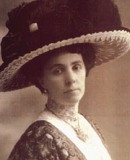
Ivana Brlić Mažuranić
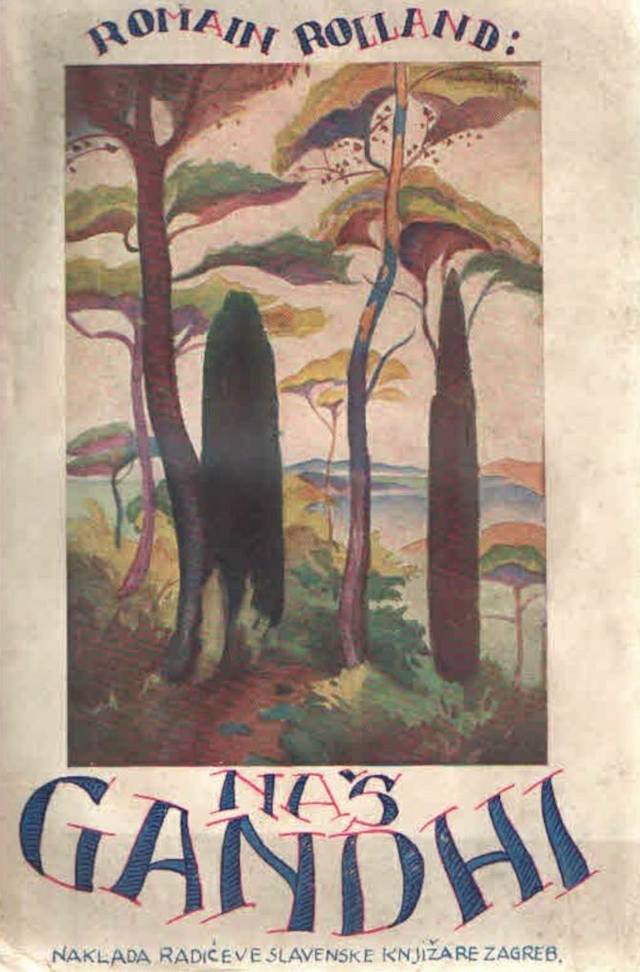
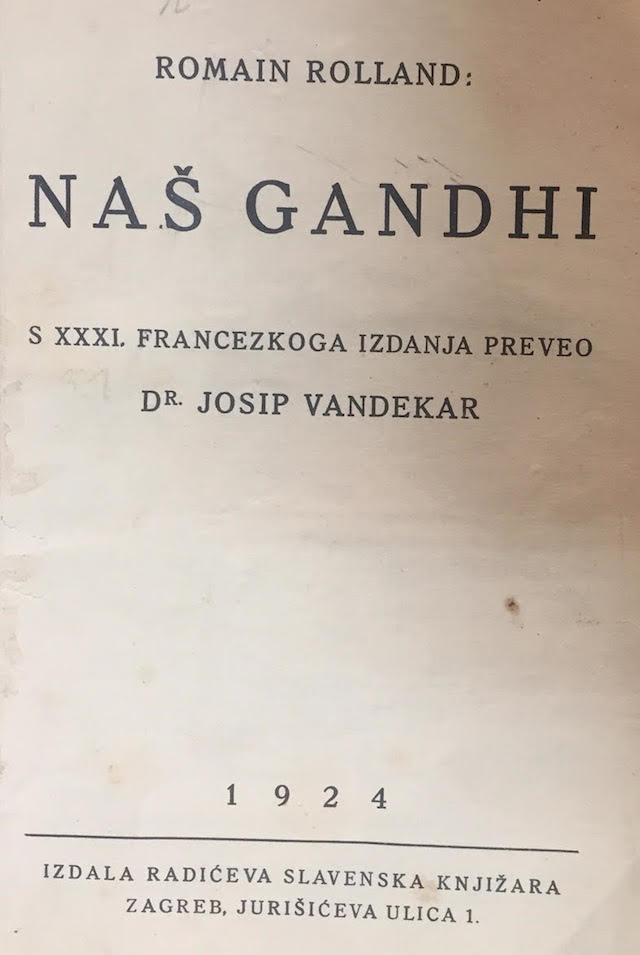
Prijevod s 31. (sic!) francuskog izdanja. Knjiga je u Francuskoj objavljena te iste 1924. g.!
Hrvatski prijevod ima 138 str., popraćen brojnim bilješkama prevoditelja.
Prevoditelj Josip Vandekar bio je zastupnik HSS-a.
Knjiga je tiskana u 3000 primjeraka.
Godine 1924. organizirao je kao nakladnik prijevod knjige o njemu i napisao predgovor. Knjigu je na francuskom jeziku napisao Romain Rolland. U toj knjizi (pod naslovom Naš Gandhi) je objavljena i studija Stjepana Radića “Hrvatski mirotvorni i indijski nenasilni pokret”.
Reklama za knjigu Naš Gandhi Romaina Rollanda, objavljena u časopisu Božićnica, Zagreb 1930.
Naklada od 3000 primjerka otisnuta je u tri cjenovne kategorije.
Osim spomenute knjige, Stjepan Radić je o Gandhiju napisao ove članke:
- Čovječanski nacionalizam Indije, Dom 17/1924.;
- Kako se bore najveći seljački narodi, Dom 32/1924.;
- Hrvatski mirovni i indijski nacionalni pokret: Dom 47/1924.;
- Četiri svjetska seljačka velikana, Dom 9/1925.;
- Pomiritelj i spasitelj Indije Mahatma Gandhi, Narodni Val 134/1927. te
- Pobuna Azije, Božićnica za 1928. godinu.
Izvor HSS Hrvatska
- Romain Rolland (English edition in India): Mahatma Gandhi [PDF], Agra 1948.
- Joginder Singh Nijjar and Darko Žubrinić: Two giants of nonviolence and peacemaking / Mahatma Gandhi of India and Stjepan Radić of Croatia
Prevoditelj dr. Josip Vandekar, koji je napisao i uvodnu studiju knjige Naš Gandhi, rođen je 1892. g., a preminuo 1927., sa samo 35 godina (u nama nepoznatim okolnostima). Supruga mu je bila Milica Radić (Prag 1899. - Zagreb 1946.), kći Stjepana Radića i Marije Radić (r. Dvoržak, rodom iz Češke). Imali su sinove dr. Milutina Vandekara (Zagreb 1924. - Geneva 2014.) i Božidara Vandekara.
Prezime Vandekar je u Hrvatskoj dosta rijetko: postoji pedesetak osoba s prezimenom Vandekar. Prema jednom mišljenju, "vandekar" znači zidar (od njem. Wand - zid). Druga je mogućnost "Van de Kar", Flamansko prezime (kar = kolica), koje je dosta rašireno (oko 649 tisuća pojavljivanja).
Godine 1931 u Sarajevu je objavljena knjžica od tridesetak stranica, čiji auktor je istaknuti hrvatski pjesnik
Tin Ujević: Dva glavna bogumila (Tolstoj i Gandhi), Sarajevo 1931.
Knjigu je tiskalo poduzeće Hrvatska tiskara u Sarajevu.
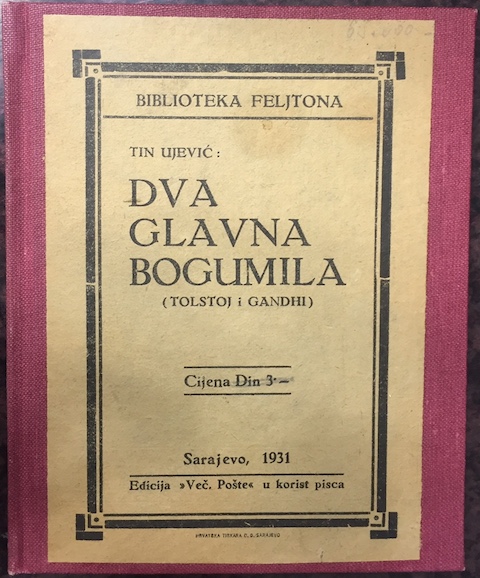

Projects of world peace in Croatia:
- A Remarkable Address Given by a Croatian Minister to Those Going to War 1778, discovered by Dr. Borislav Arapović, Stockholm
- Vladimir Paleček and his NGO Hungry Child (1969-1980)
- Dr. Slobodan Lang
- Nenad Bach (Croatia, USA - New York), musician, composer and peace activist: Word Peace In One Hour, Ping Pong Parkinson
Acknowledgments
Many thanks to
- late Mr. Vladimir Novak for his first information about
Kristian Kreković, as well as to his wife Mrs. Maria Johanna Novak
- Ingeborg Möller Rizo, for her master thesis Kristian Kreković, and to Nenad Bach, NY, for bringing me the thesis from NY to Zagreb
- Mrs. Ljerka Galic of the Matrix Croatica (Hrvatska matica iseljenika - Croatian Heritage Foundation), for her information about the album of Kristian Kreković
- Mr. Joginder Singh Nijjar, president of the Croatian-Indian Society, for his kind information about Stjepan Radić's writing about Mahatma Gandhi.
